Part 1: Egyptian pyramids
Brief descriptions are mostly taken from http://www.geolines.ru/eng.
There is also a remarkable link to the Lepsius list of pyramids (https://www.wikiwand.com/en/Lepsius_list_of_pyramids), where a great number of smaller and ruined pyramids are collected. This is, so to say, just in case somebody needs more information. After all, main information sources pay attention to the most significant complexes only.
The Great Sphinx of Giza is a reference point relative to which everything was designed and built.
29°58'30.75"N 31°8'15.64"E
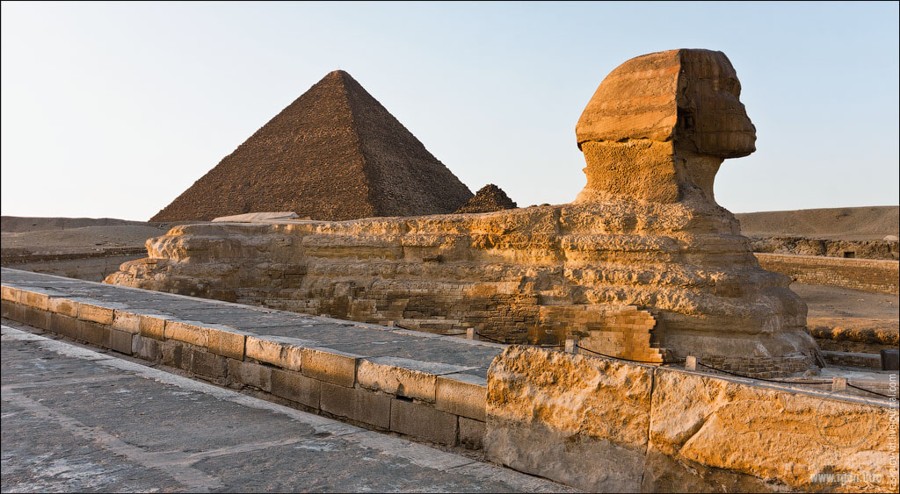
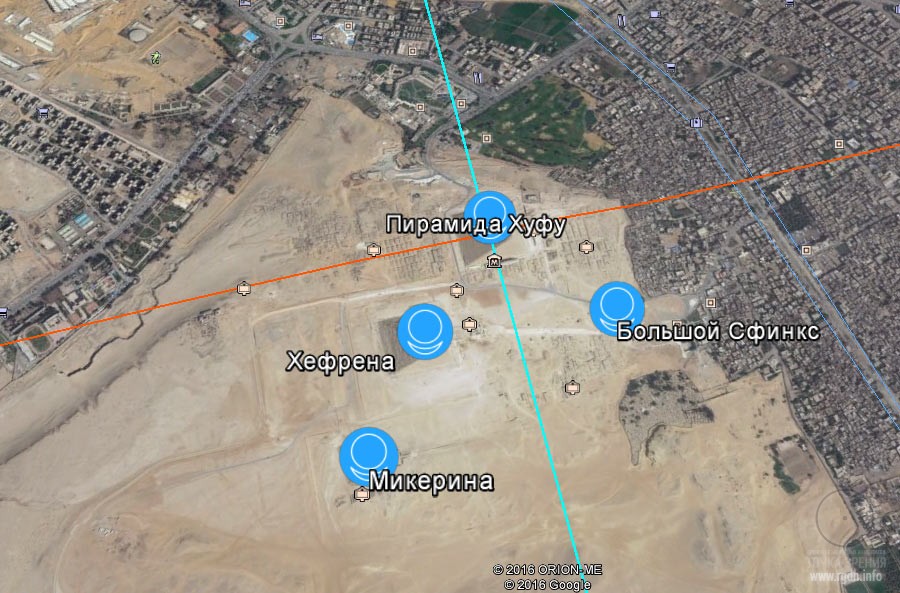
You can read more about the Great Sphinx in the Keeper of Genesis article series – Part I, Part II, Part III.
29°52'16.09"N 31°12'59.70"E
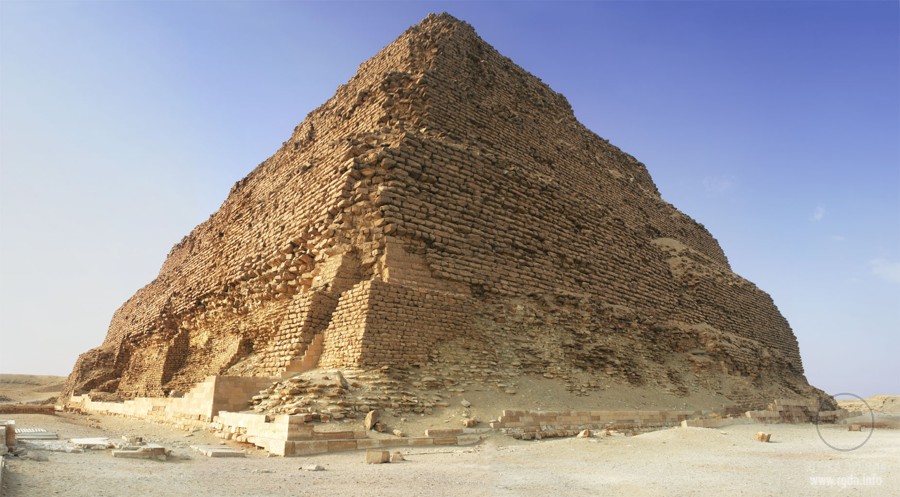
The Step Pyramid of Djoser in Saqqara was built by Imhotep circa 2680 BC.
The Great Step Pyramid Complex at Saqqara, known to the ancient Egyptians as kbhw-ntrw (“libation of the deities”), is one of those superstars of Egyptian monuments that is almost always on the itinerary of antiquity tours to Egypt, and for good reason. Few monuments hold a place in human history as significant as that of this Pyramid. It can be said without exaggeration that the Step Pyramid complex constitutes a milestone in the evolution of monumental stone architecture, both in Egypt and in the world as a whole. The complex is surrounded by a wall of fine white Tura limestone, which when built, measured some 10.5 meters (34 feet) high and was 1,645 meters (5,397 ft) long. Within was an area of about 15 ha (37 acres), which would have been the size of a small town during the Old Kingdom.
Wikipedia: https://en.wikipedia.org/wiki/Pyramid_of_Djoser
On the map:
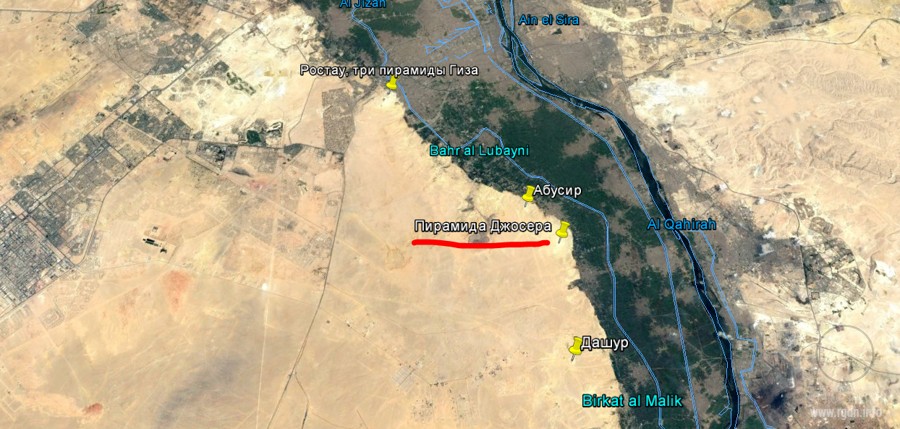
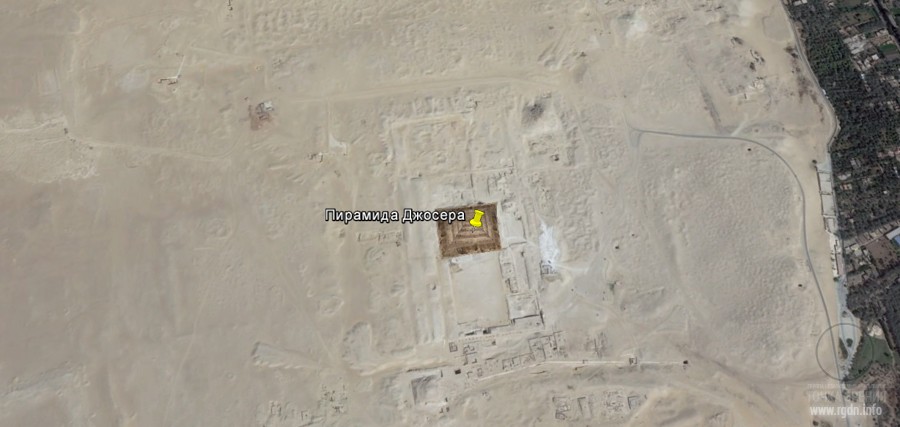
The subsidiary Pyramid of Userkaf:
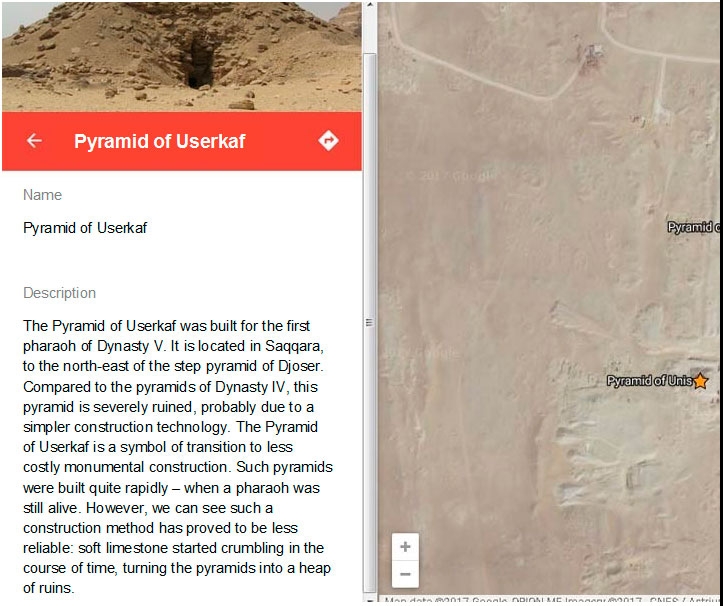
The subsidiary Pyramid of Unas:
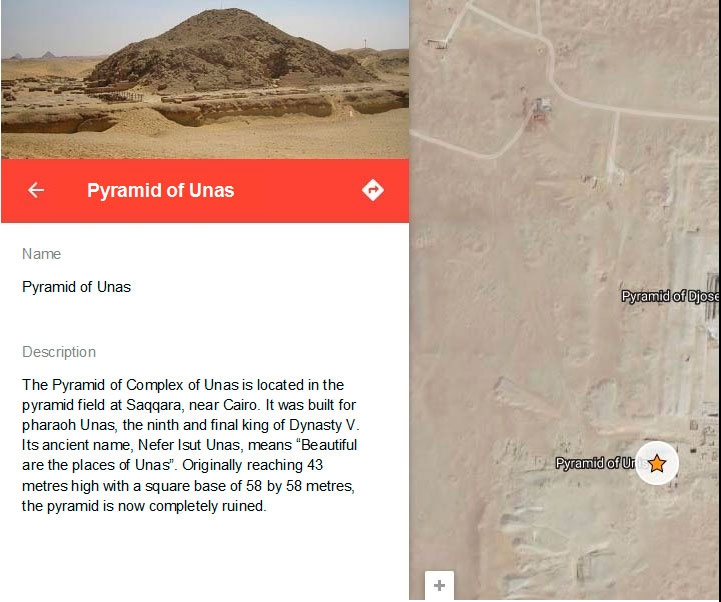 Video:
Video:
29°48'30.42"N 31°12'22.69"E
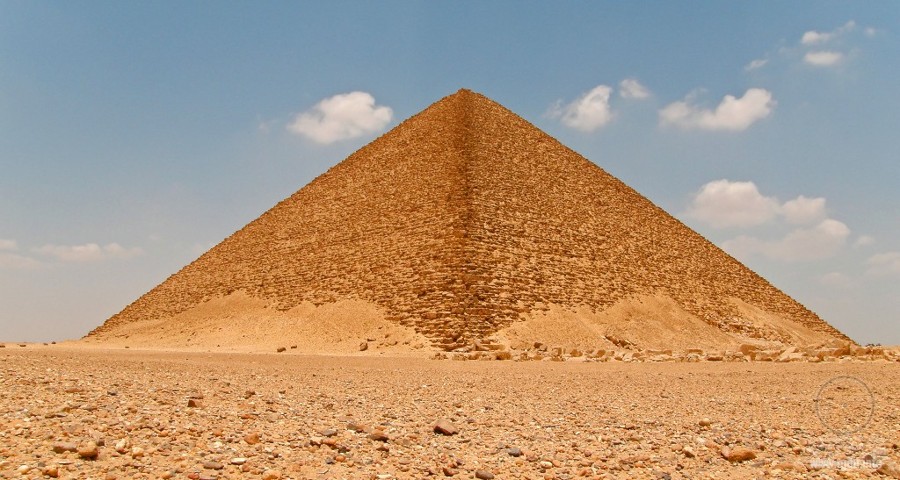
The Red Pyramid in Dahshur. Known as the Red Pyramid for its pinkish limestone, the North Pyramid in Dahshur is the third largest pyramid in Egypt and one of the few whose interior is open to visitors. The Red Pyramid was built by Pharaoh Sneferu (2575-2551 BC), father of Khufu. Ancient graffiti indicates it took ten years and seven months to build. The North Pyramid is the second of Sneferu's two pyramids (the other is the Bent Pyramid) and it marks the first successful attempt at building a true smooth-sided pyramid.
Wikipedia: https://en.wikipedia.org/wiki/Red_Pyramid
Location Dahshur
Customer Sneferu
Construction time Dynasty IV (circa between 2640 and 2620 BC)
Type pyramid
Building material limestone
Base 220 m
Height (initial) 109.5 m
Height (today) 104 m
Volume 1,694,000 m³
Slope 43° 22'
On the map:
Video:
29°47'24.02"N 31°12'32.65"E
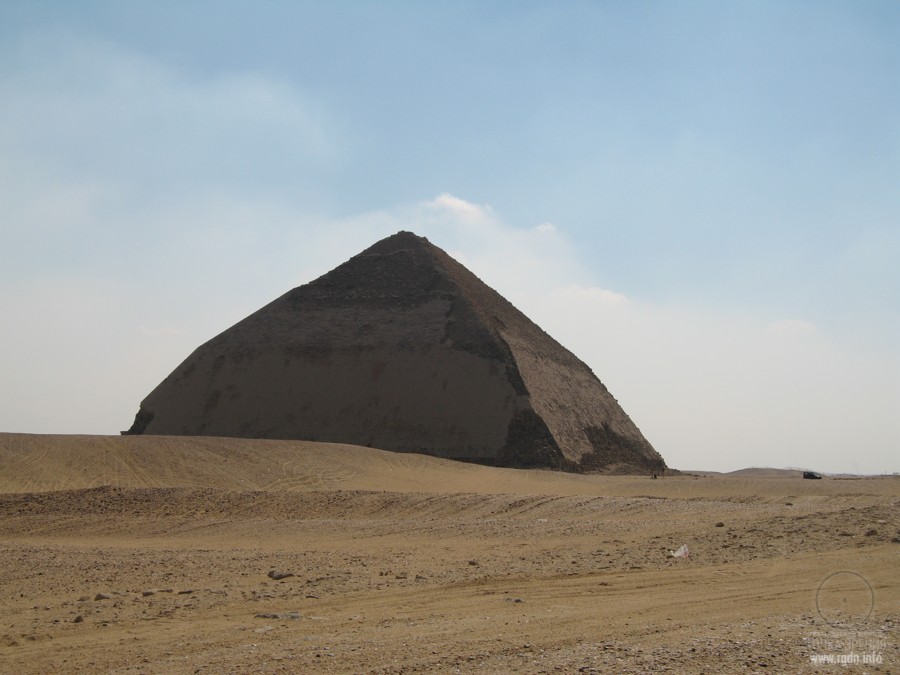
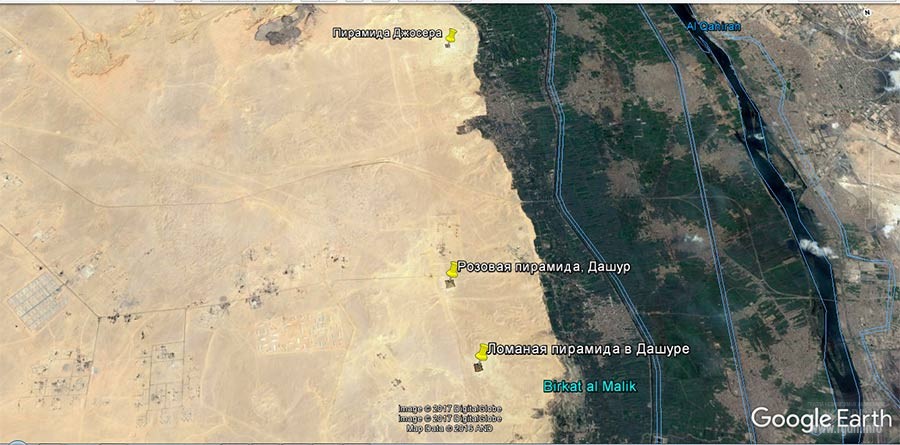
Built by Pharaoh Sneferu, the Bent Pyramid dates to about 2600 BC. It was the first pyramid to have been planned as a true pyramid, as opposed to a step pyramid. The Bent Pyramid gets its nickname from its unusual bent angle – the initial 54° angle changes to 43° halfway up. It most likely occurred because the builders realized the initial angle was too steep and adjusted it to avoid collapse. The nearby Red Pyramid, which was built immediately after, has a 43° angle throughout. The Bent Pyramid is 599 ft square and its original height was 344 ft. It is believed to be the first attempt at creating a pyramid with smooth sides. It was only partially successful, but it was a significant step in pyramid development. Today it is also the only Egyptian pyramid to retain a majority of its original limestone casing, providing the best feel for the original appearance of all pyramids.
Map:
У Ломаной пирамиды есть The Bent Pyramid has a subsidiary pyramid (!).
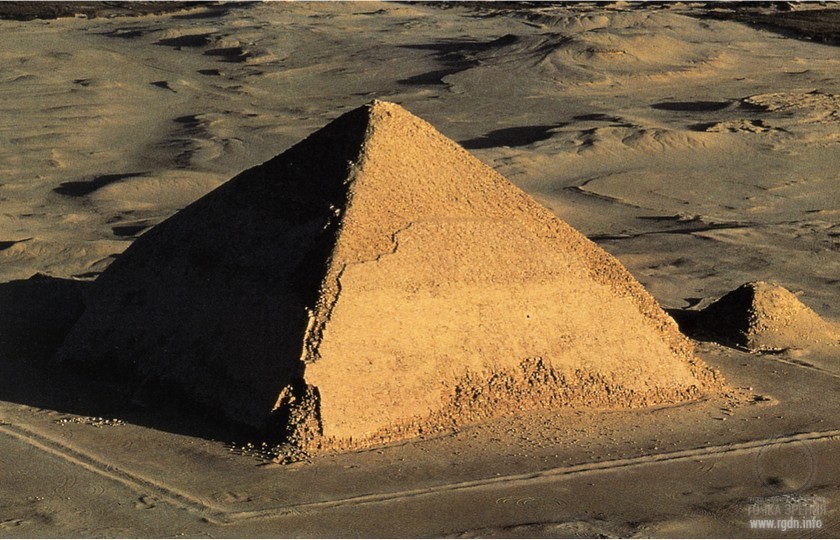
Wikipedia: https://en.wikipedia.org/wiki/Bent_Pyramid
Location Dahshur
Customer Sneferu
Construction time Dynasty IV (circa 2596 BC)
Type bent pyramid
Building material limestone
Base 189.4 m
Height (initial) 104.7 m
Height (today) 101.1 m
Slope 54° / 43°
Cult pyramid on the southern side
height: 26 m
base: 52.80 m
slope: 44°3'
Video:
29°47'31.25"N 31°13'25.17"E
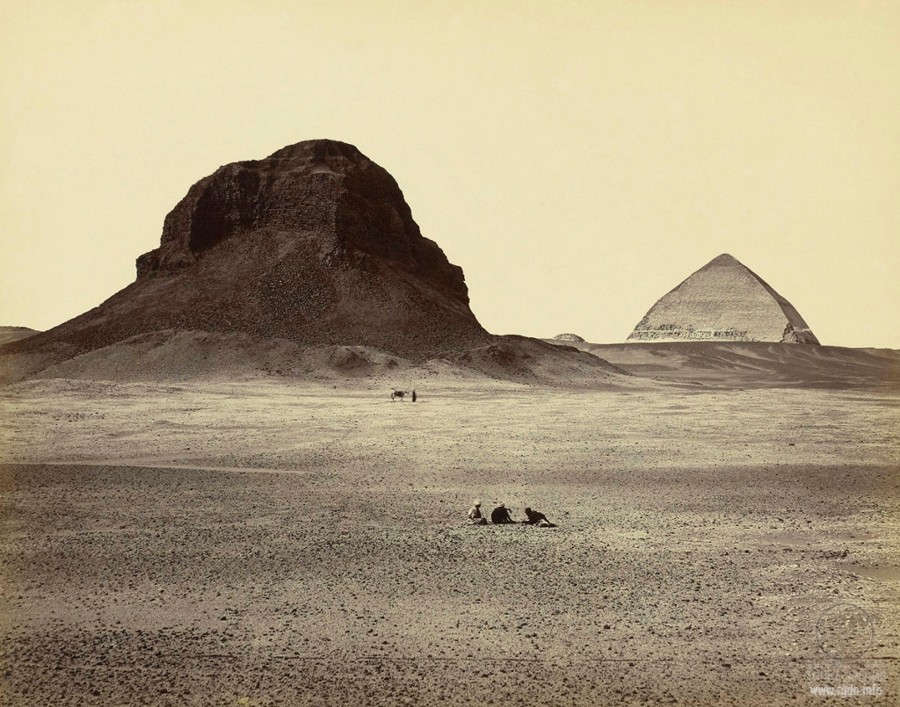
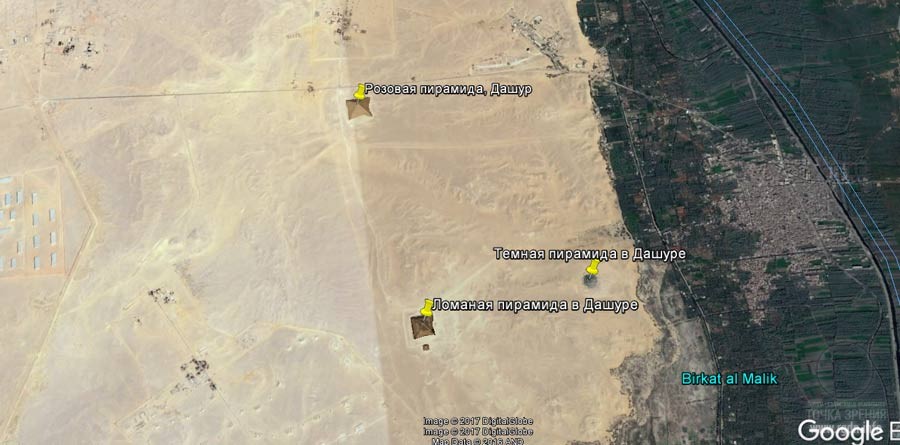
The so-called Black Pyramid of Amenemhet III is located at Dahshur east of the Bent pyramid. Built on low ground near Lake Dahshur and with clay foundations, the location was perhaps not the most ideal. During the Middle Kingdom, pyramids were built with mud brick instead of quarried stone. This meant that once the casing was removed by robbers who wanted to use it for their own building purposes, the mud brick core would be vulnerable to erosion from the elements. This is what gives the pyramid its unusual appearance as only the inner mud-brick blocks remain.
Wikipedia: https://en.wikipedia.org/wiki/Pyramid_of_Amenemhat_III_(Dahshur)
Location Dahshur
Customer Amenemhat III
Construction time Dynasty XII
Base 105 m
Height (initial) 75 m
Slope 59°
Cult pyramid no
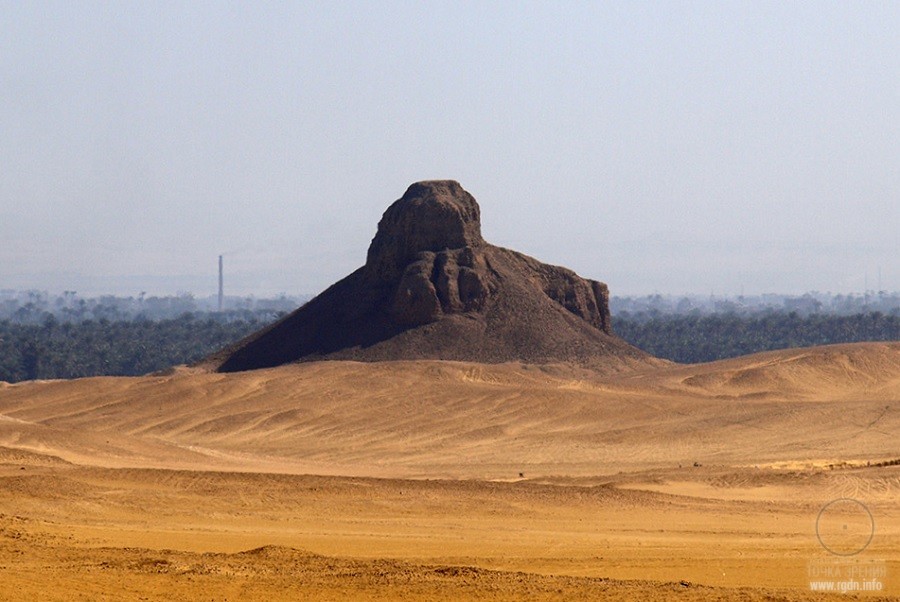
29°53'49.29"N 31°12'13.32"E
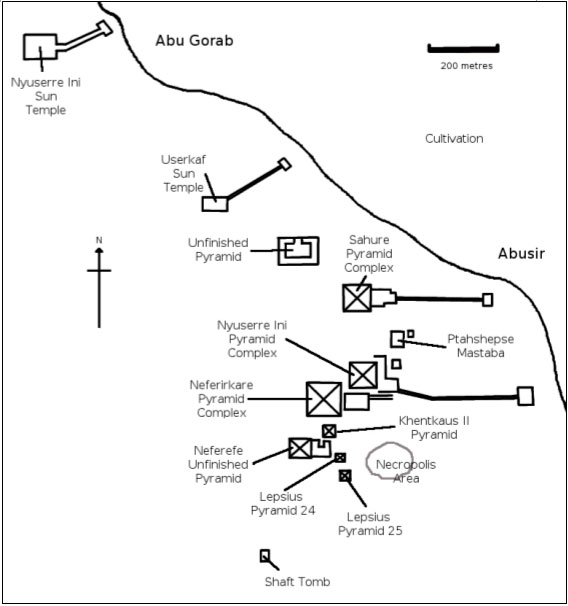
Sahure Pyramid Complex: 29°53'51.99"N 31°12'12.26"E
Neferirkare Pyramid Complex: 29°53'42.32"N 31°12'8.64"E
Nyuserre Ini Pyramid Complex: 29°53'44.52"N 31°12'12.94"E
Neferefe Pyramid: 29°53'37.71"N 31°12'5.83"E
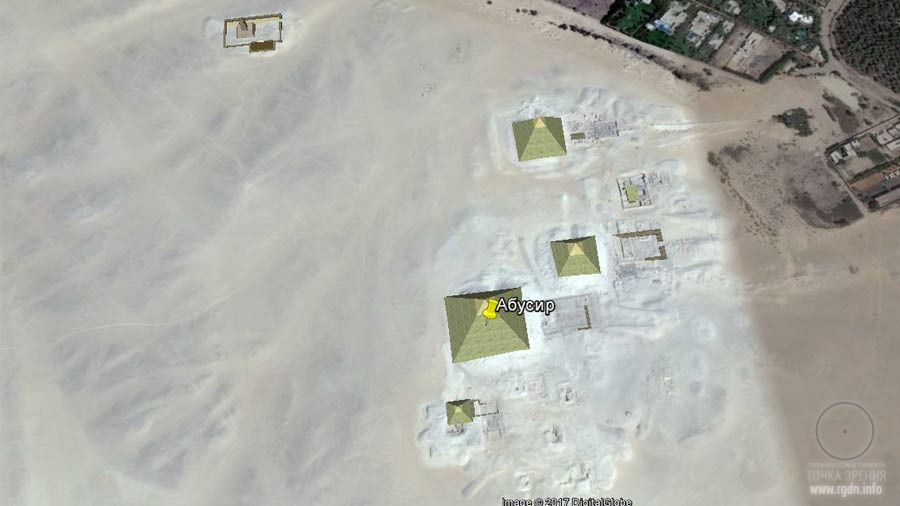
Abusir is the Fifth Dynasty necropolis. 14 pyramids are found here. Not all the Fifth Dynasty pyramids are at Abusir: there are two at Saqqara (Unas and Userkaf) and one at south Saqqara (Djedkare-Isesi). Abusir is about half way between Giza and Saqqara. The quality of construction is much inferior to the Fourth Dynasty masterpieces, perhaps signalling a decrease in royal power or maybe a less vibrant economy. The pyramids are smaller and built of low-quality local limestone. The visitor only sees 3 pyramids from a distance, that of Sahure (at the entrance to the site), the pyramid of Nyuserre, and the most intact pyramid of Neferirkare. Borchardt found the famous Abusir papyruses in the Funerary temple of Neferirkare. These revealed an enormous amount of information of the Fifth Dynasty life and economy. There is even information indicating that astronomer-priest observed the stars every night from the temple rooftop. There is only one mastaba of significance here – that of Ptahshepses, a high-level official during the reign of king Sahure.
Wikipedia: https://en.wikipedia.org/wiki/Abusir
Map:
29°58'44.77"N 31°8'3.26"E

Khufu (Cheops): 29°58'46.15"N 31° 8'4.57"E
Khafre (Chephren): 29°58'34.86"N 31° 7'52.77"E
Menkaure (Mykerinos): 29°58'21.65"N 31° 7'42.72"E
Construction period: circa 2600-2300 BC
The topic is already covered extensively on our website:
· Keeper of Genesis. The Great Sphinx
The Great Pyramid at Giza has remained a complete mystery in modern times. When was it built? Who built it? Above all else, what is it? Conventional Egyptology declares that all pyramids were tombs for the pharaohs. The sophistication, required technology and cost of the Great Pyramid conflict with the thought that it is simply a tomb. This level of effort for a burial place stretches common sense to the breaking point.
To quote Alan Alford (The Phoenix Solution), “Is it so crazy to suggest that the unique design of the Great Pyramid was a legacy from an earlier, more advanced culture? In my view, it is certainly much less crazy than continuing to believe that the Pyramid was constructed as a tomb for a dead king, and that he built this totally over-engineered and revolutionary wonder of the world with absolute perfection at the first attempt. The enormity of the Great Pyramid poses a challenge for any who would attempt to explain how it could have been constructed. It is estimated to comprise some 2.4 million stone blocks averaging 2.5 tons (2.27 metric tons) each, plus additional blocks weighing considerably more lying deep within the pyramid where they serve special functions.”
Map:
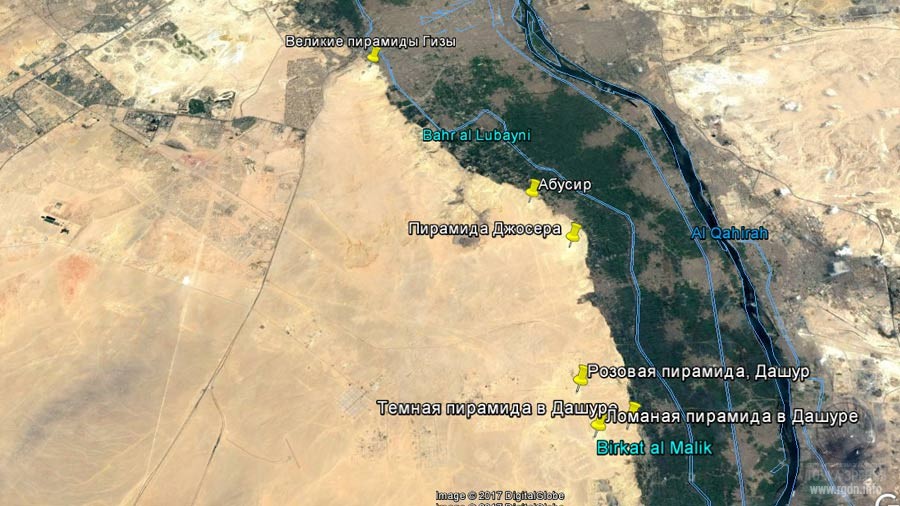
This is what we have for the time being.
Documentaries and more details on Giza pyramids are here.
Wikipedia: https://en.wikipedia.org/wiki/Giza_pyramid_complex
29°23'17.52"N 31°9'24.84"E
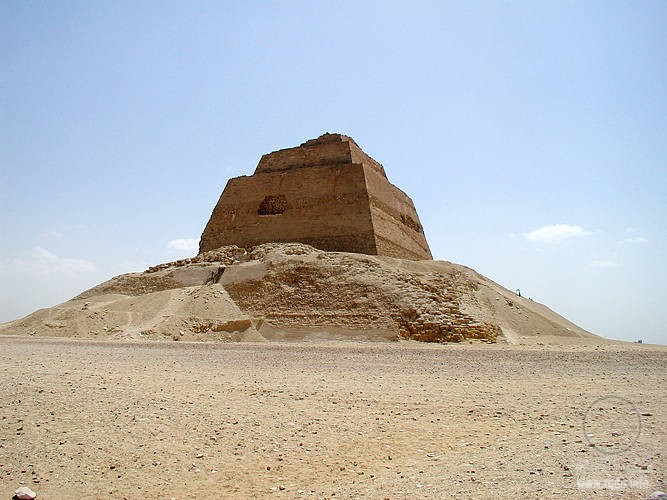
The pyramid at Meidum is thought to have been originally built for Huni, the last pharaoh of the Third Dynasty. It was completed and probably usurped by his successor, Sneferu, who also turned it from a step pyramid to a true pyramid by filling in the steps with limestone encasing. The Meidum pyramid was built in different stages, beginning as a seven-step pyramid to which an additional step was added at a later stage. It appears to have collapsed sometime during the New Kingdom. A subsidiary pyramid is located on the southern side, between the main pyramid and the enclosure wall, and a memorial temple is on its eastern side.
Map:
Wikipedia: https://en.wikipedia.org/wiki/Meidum
Location Meidum
Customer Huni, then Sneferu
Construction time Dynasty III (circa 2680 BC)
Type step pyramid
Base 144 m
Height (initial) 93.5 m
Height (today) 65 m
Slope 51°50'35
Cult pyramid
Queen pyramids 1
As we can see, it also has a subsidiary pyramid:
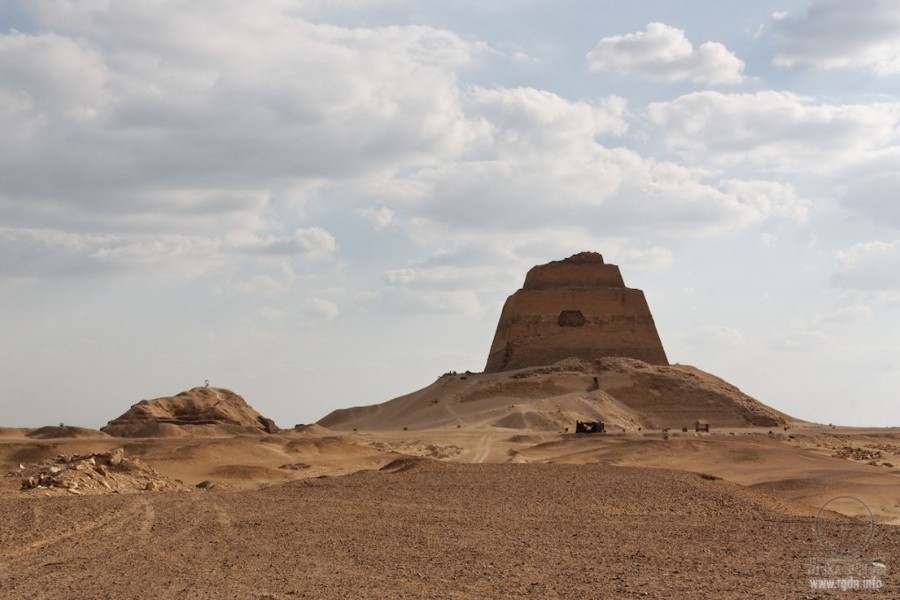
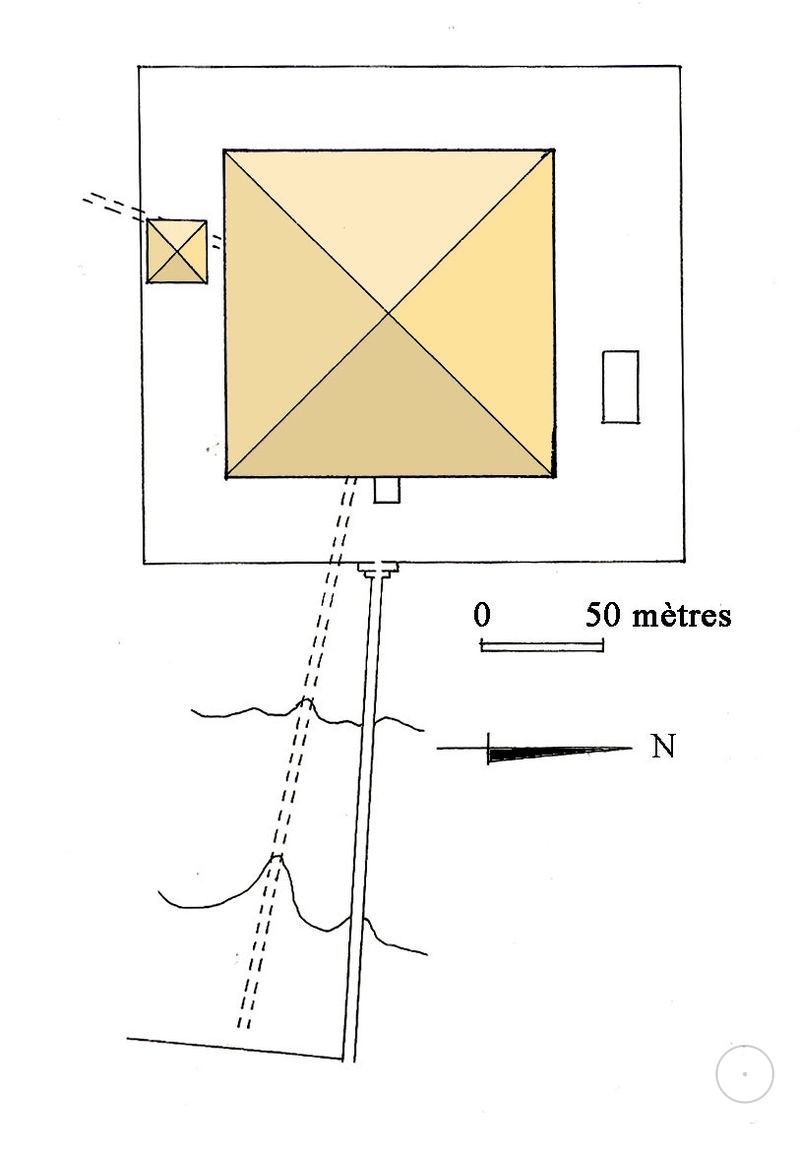
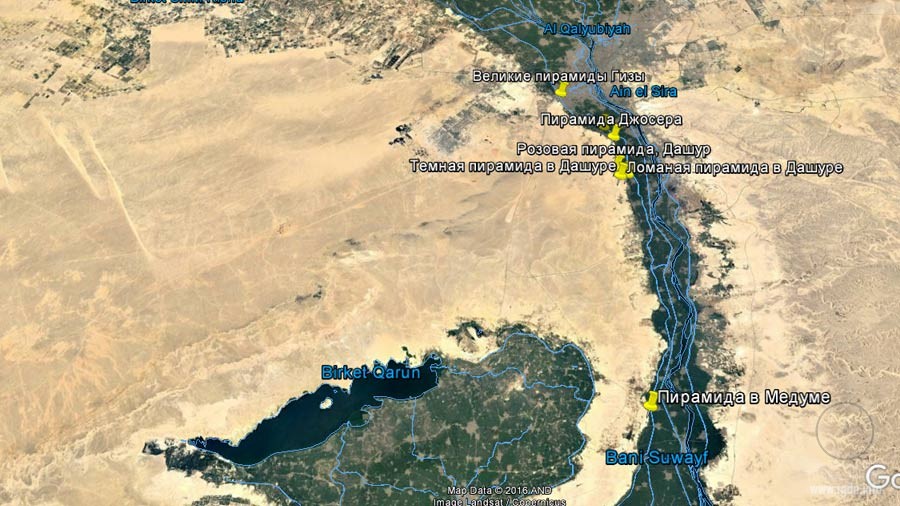
29°16.460'N 30°53.937'E
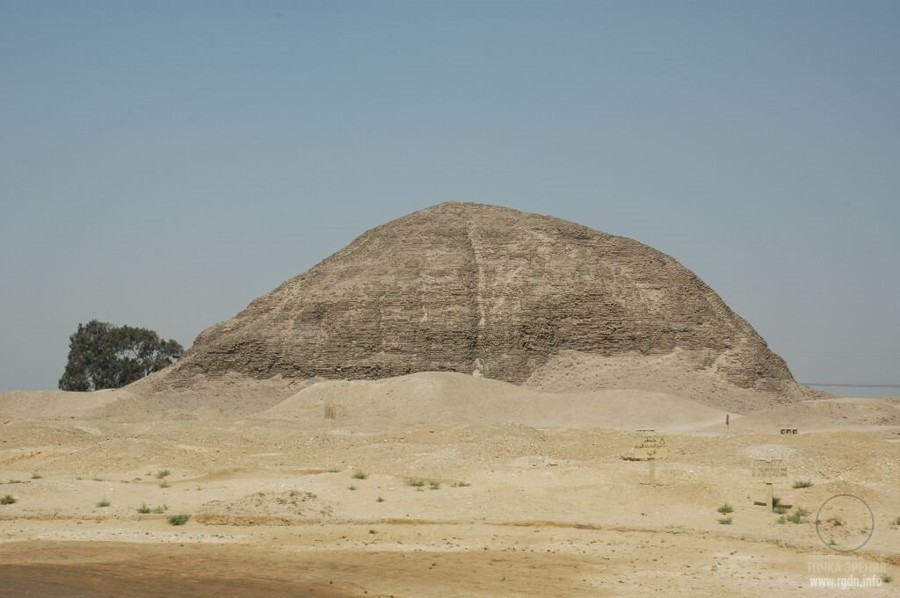
Hawara is an archaeological site of Ancient Egypt, south of the site of Crocodilopolis (Arsinoe) at the entrance to the depression of the Fayoum oasis. The first excavations at the site were made by Karl Lepsius, in 1843. William Flinders Petrie excavated at Hawara, in 1888, finding papyri of the first and second centuries, and, north of the pyramid, a vast necropolis where he found 146 portraits on coffins dating to the Roman period, famous as being among the very few surviving examples of painted portraits from Classical Antiquity, the "Fayoum portraits" illustrated in Roman history textbooks. Amenemhet III was the last powerful ruler of the Twelfth Dynasty, and the pyramid he built at Hawara is believed to post-date the so-called Black Pyramid built by the same ruler at Dahshur. It is this that is believed to have been Amenemhet's final resting place. At Hawara there was also the intact (pyramid) tomb of Neferu-Ptah, daughter of Amenemhet III.
The funeral temple located to the south of the pyramid was known in ancient times as the labyrinth. It has twelve covered courts – six in a row facing north, six south – the gates of the one range exactly fronting the gates of the other. Inside, the building is of two storeys and contains 3,000 rooms, of which half are underground, and the other half directly above them. The rooms in the upper storey are accessible, but the underground are closed for visits because they contain the tombs of the kings who built the labyrinth, and also the tombs of the sacred crocodiles. As for the upper rooms, it is hard to believe they are the work of men; the baffling and intricate passages from room to room and from court to court are an endless wonder. The roof of every chamber, courtyard, and gallery is, like the walls, of stone. The walls are covered with carved figures, and each court is exquisitely built of white marble and surrounded by a colonnade.
Map:
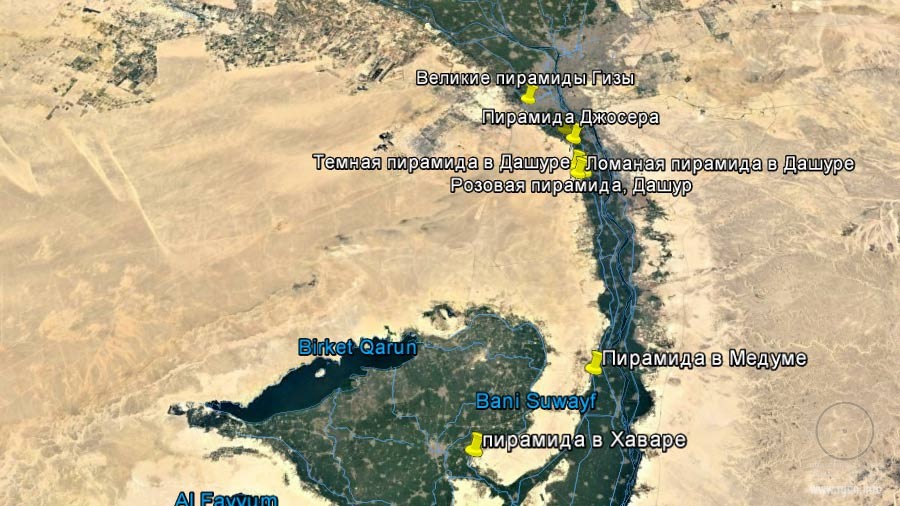
29°55'58.00"N 31°9'40.54"E
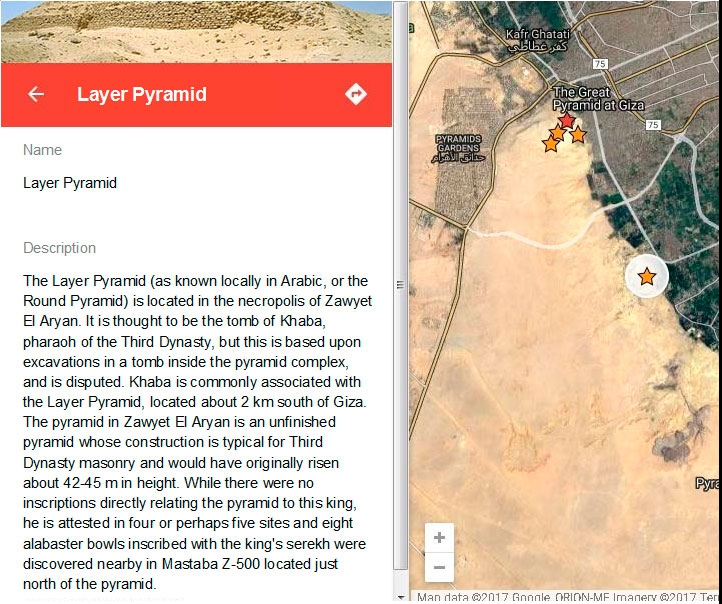
Wikipedia: https://en.wikipedia.org/wiki/Layer_Pyramid
Location Zawyet El Aryan
Customer Khaba
Construction time Dynasty III (circa between 2663 and 2655 BC)
Type step pyramid
Building material limestone
Base 84 m
Height (initial) 17 m (planned height was about 40 m)
Number of steps 5 ?
Cult pyramid no
Queen pyramids no
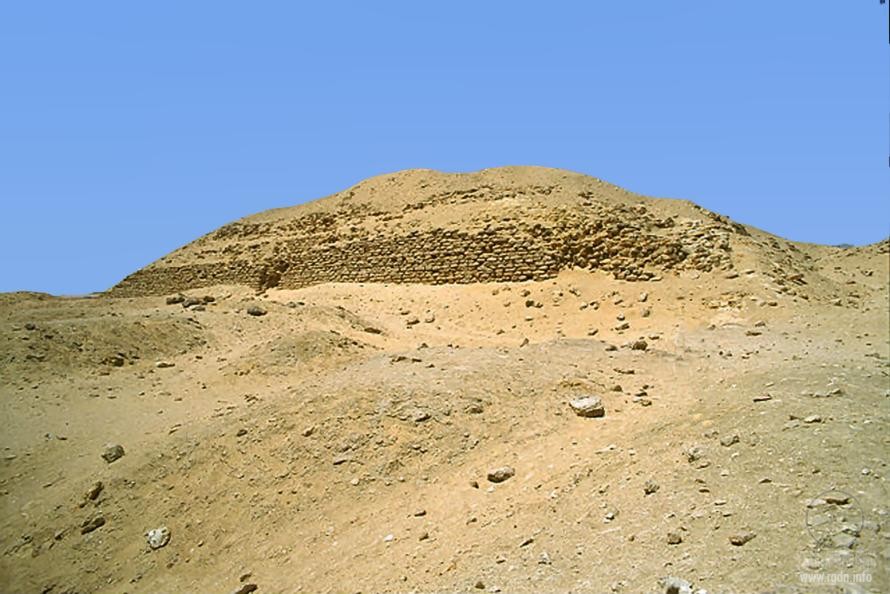
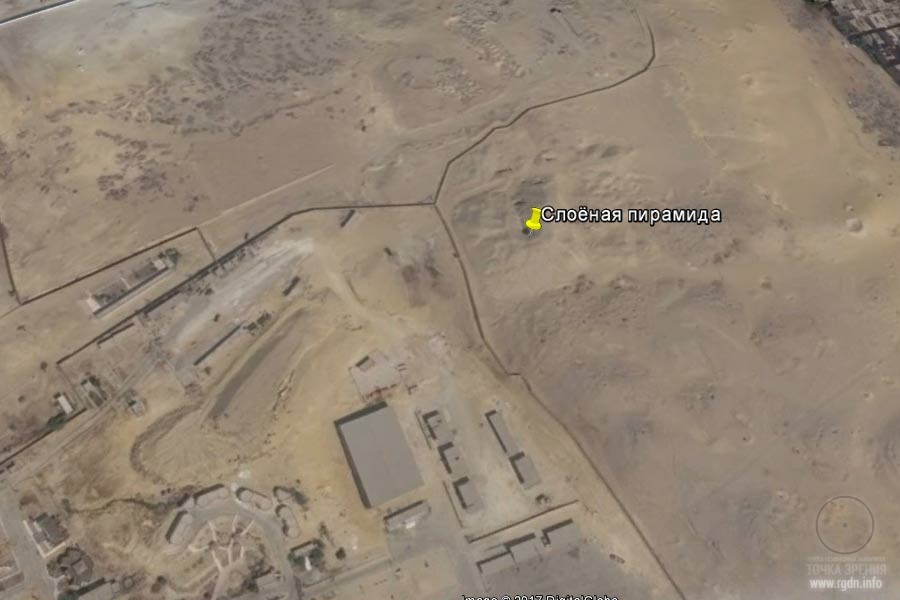
30°1'55.85"N 31°4'29.62"E
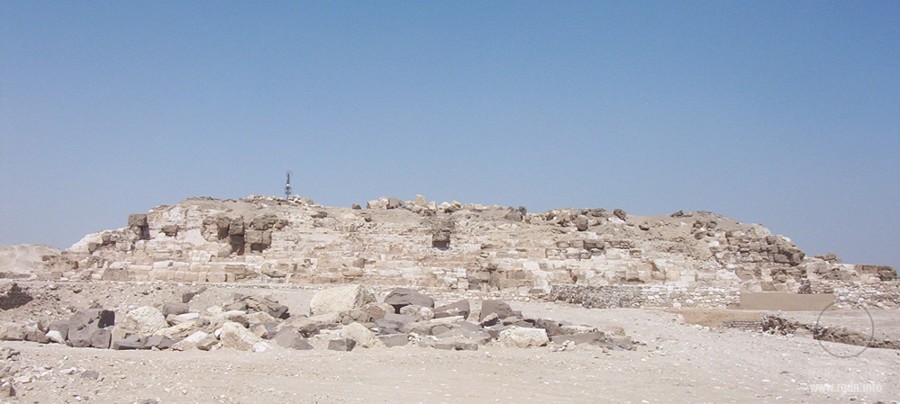
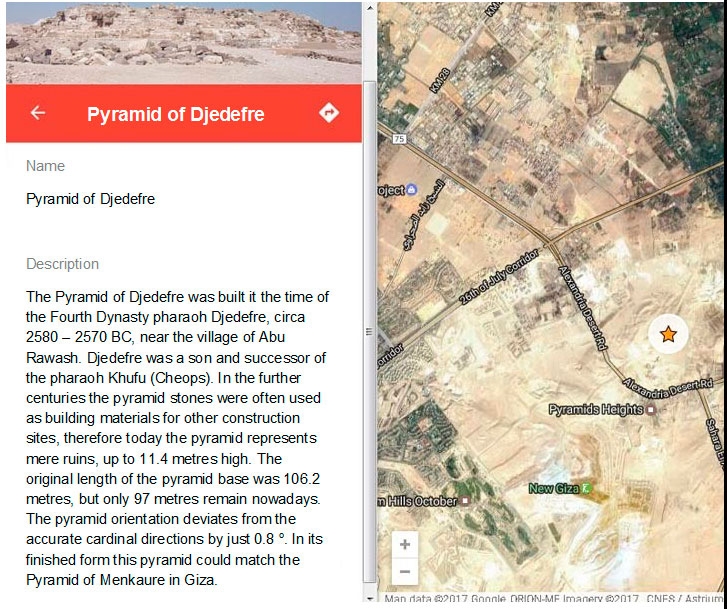
Wikipedia: https://en.wikipedia.org/wiki/Pyramid_of_Djedefre
Location Abu Rawash
Customer Djedefre
Construction time Dynasty IV (circa between 2580 and 2570 BC)
Base 106 m
Height (initial) 67 m
Height (today) 11.4 m
Volume 131,043 m³
Slope 52°
Cult pyramid no
Queen pyramids 1
29°22'57.62"N 31°3'12.71"E
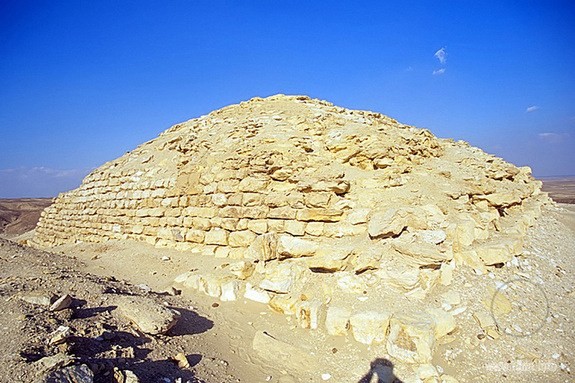
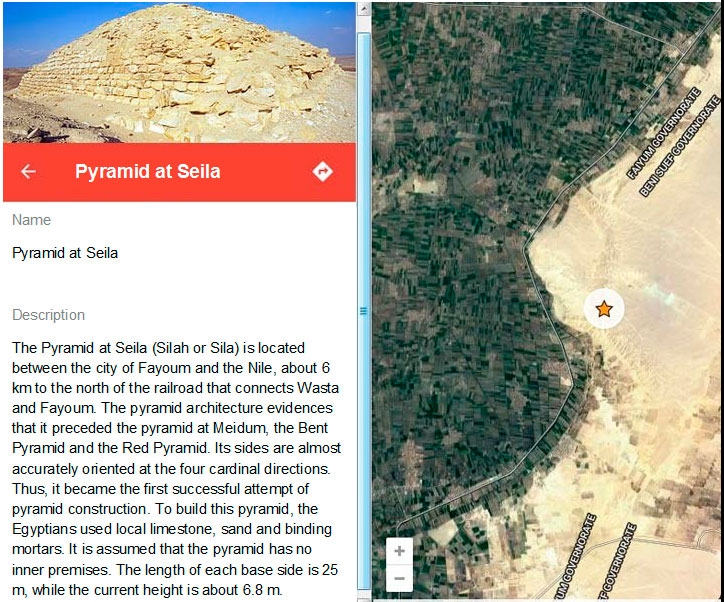
We could also add hereto the Mastaba of Shepseskaf in Saqqara (https://en.wikipedia.org/wiki/Shepseskaf).
Moreover, the territory of Egypt contains a great number of tumbledown and completely ruined small and middle-sized pyramids. We will leave them unaccounted so far, bearing in mind the presence of “genuine” and “false” pyramids. Perhaps, we are mistaken, but something makes us believe the “genuine” pyramids were built more solidly and competently, so they are all listed and described above. Nonetheless, we will keep on searching.
So, the map of locations of the most important pyramids looks roughly as follows:
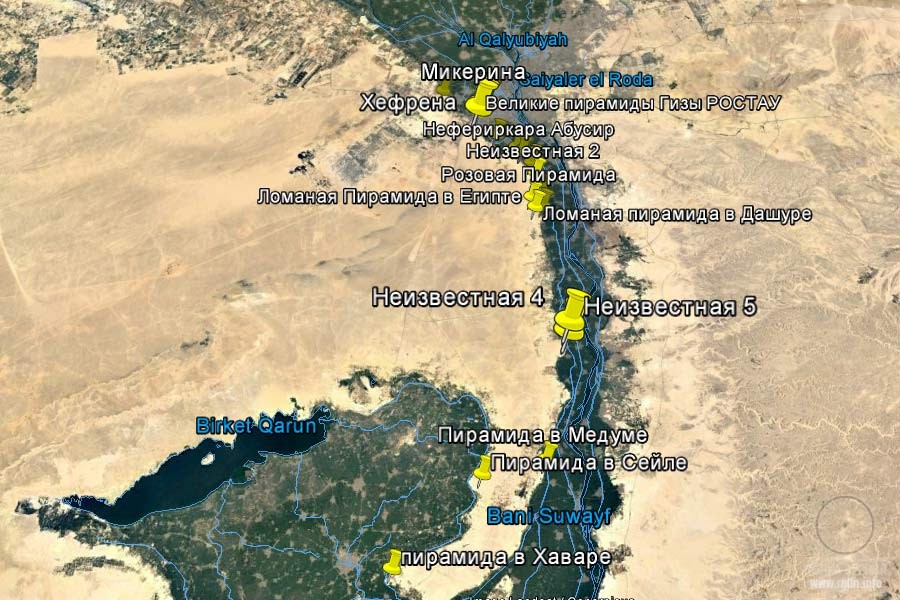
Should we take a bird's-eye view of this area more intently, we unexpectedly find many small tumbledown and ruined pyramids, mostly along the Nile River Valley. There are even whole complexes like those in Giza, Saqqara, Abusir, and Dahshur. Later on we will do the necessary comparative work as to orientation of the pyramids to the stellar sky. At that, what we already know is below.
So, let’s confidently put the first marker on the world map. It is the constellation of Orion mimicked on the Earth by the three Pyramids of Giza. They symbolise the central segment of the constellation, which ancient Egyptians called Rostau. We owe this discovery to Robert Bauval, the researcher who has spent 30 years unravelling the riddle of the Egyptian pyramids. In our turn, we now pick up the baton and will soon try to continue the quest of other constellations reflected on our planet in long-forgotten stone structures.
As a supplementary tool to search for the constellations, in a separate article we have posted maps composed by the Prussian archaeologist Karl Lepsius two centuries ago.
Here’s the Orion constellation which we will surely talk more about.

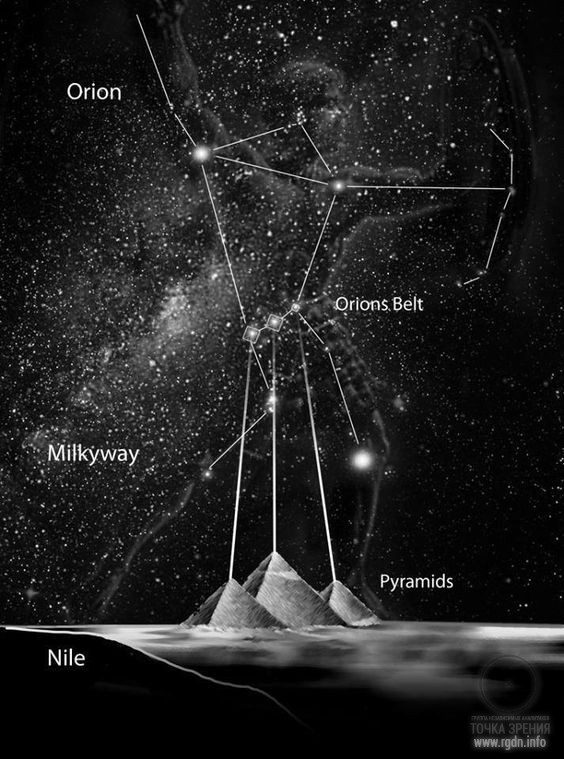
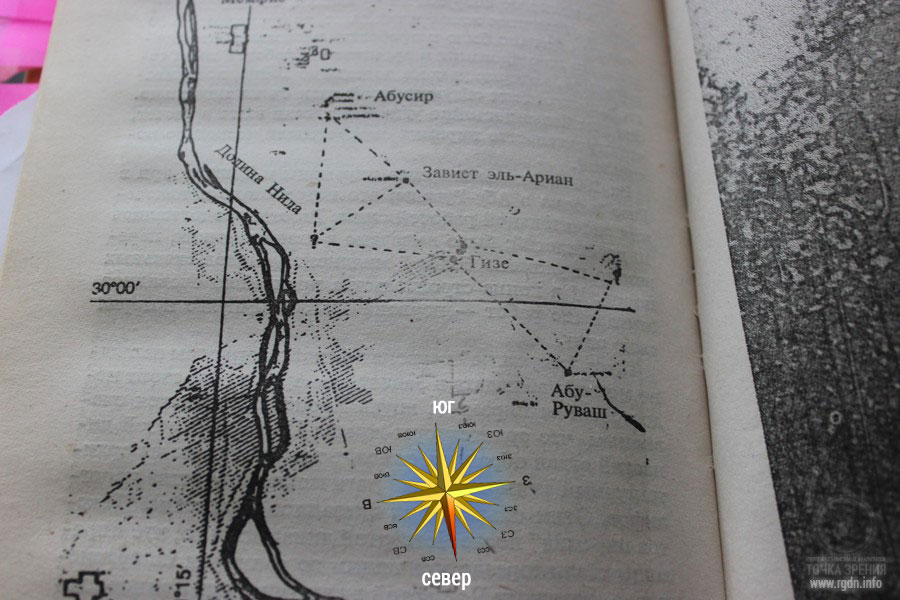
This publication is continuously improved and updated.
Prepared by А... and Dato Gomarteli
 Pyramids of the world: Part 1. Egypt. The Orion constellation
votes:
87
Pyramids of the world: Part 1. Egypt. The Orion constellation
votes:
87
|

Project Aim










Leave comment